There’s Norwegian word, koselig, that can’t be directly translated into English. Roughly, it means ‘cosy’; a space, person or anything that has a warm, lovely feeling. The Dutch have a word for this too: gezellig. Though the spelling and pronunciations are different, we see a clear relationship between the words.
The Netherlands and Norway are very different in many aspects, but their people’s penchant for having that feeling emulates across borders. Norwegian footballer Martin Ødegaard may vouch for the fact that life in the Netherlands is often cosy, as he has definitely settled in during his near two-year spell in the country.
Profile
Martin Ødegaard was regarded as one of the greatest Nordic talents of this century when he burst onto the scene at 15 years of age. Norwegian club Stromsgodset knew they had a gem on their hands when the likes of Ajax, Liverpool, and Real Madrid came knocking on the door to inquire about the creative Ødegaard. He became an overnight sensation and, in 2015, moved to Madrid for an economical fee of €2.8 million.
To this day, Ødegaard has made only two appearances for Real Madrid’s first team. Two years went by until the Norway international was allowed to leave on loan. SC Heerenveen picked up his services for a season and a half before he returned to Madrid last summer. However, Ødegaard was sent back to the Netherlands for this season, except this time to loan-familiar club Vitesse Arnhem.
Ødegaard’s time in the Netherlands has been successful thus far. Although the goals never came for him in Friesland, his spell at Vitesse has been much more productive. Finally, the underlying statistics are beginning to pierce through the noticeable stat lines; his seven goals and six assists highlight his dual scoring/creative abilities.
To those who remember, the highlight videos of the 15-year-old Martin Ødegaard presented an intelligent creative talent, able to spot a complex pass from the corner of his eye. Now, five years on, he has become a well-rounded player, physically, technically, and versatility-wise. Ødegaard can still pick out a pass from near-impossible angles, dribble past two defenders, or cut onto his left and rocket a shot at goal. Additionally, his physicality, speed, and defensive ability often go unnoticed but will be highlighted in this piece.
Role at Vitesse
When Russian manager Leonid Slutsky joined Vitesse at the beginning of the season, the task of replacing Mason Mount loomed large. The loanee from Chelsea was extremely effective in Arnhem, using his technical ability to facilitate play and score crucial goals. Now, after the acquisition of Ødegaard to replace the Englishman, Slutsky has no doubts over his solution’s abilities. “I don’t know exactly what kind of club would be good for Martin,” said the Vitesse manager, “but he’s 100% ready for another level.”
It is Ødegaard’s creative talents that will help him succeed at the next level. For Vitesse, he is often positioned as a right-sided midfielder, although the position he plays is adaptable to whatever scenario he finds himself in. Vyacheslav Karavaev, Vitesse’s Russian right-back, can be found careening forward down the touchline.
Slutsky’s preferred midfield duo — Thulani Serero and Matus Bero — act as a double pivot. These two factors mean that the right-wing position is therefore often covered, while the attacking midfield zone is not. Ødegaard is the perfect player to slip into the gap.
A player of such pure ability such as Martin Ødegaard is so effective out on a flank because he can create space for himself on the ball, not just off it. Vitesse, relative to other Eredivisie outfits, like to pass the ball short, dribble less, and take lots of shots at goal.
Ødegaard provides a release valve; someone who is able to take his time on the ball, not rush a shot, and make a risky pass when he feels it to be required. This change of pace has helped Vitesse create some chances that they would not have without the Norwegian, and his fluid positioning means he can get the ball pretty much anywhere on the pitch.
Dribbling
Ødegaard is similar to other inverted wingers (think David Neres) in the sense that he cuts inside on his preferred left foot. However, relative to other elite Eredivisie wingers, he doesn’t dribble at a very high rate. He dribbles less than 3.5 times per 90 minutes, much less than the likes of Steven Bergwijn and Brandley Kuwas. However, Ødegaard has one of the most elite success percentages in dribbling at 74%.
Part of the reason behind this extremely high percentage of take-on success is Ødegaard’s superb technical ability. He often favours his left foot but varies his dribbling enough to be unpredictable. The dribbles also occur all over the pitch, so many of his dribbles are under less pressure than those in and around the box.
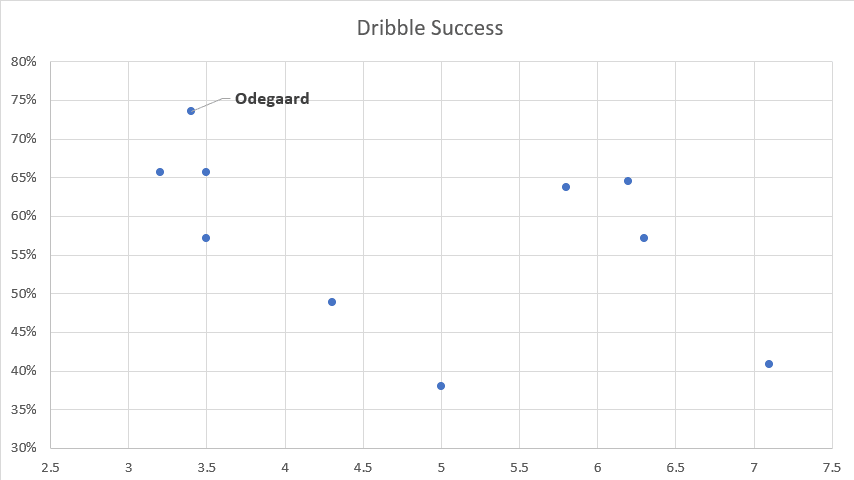
Another reason Martin Ødegaard completes three-quarters of his dribbles is his low number of attempts. As seen on the scatter plot of fellow Eredivisie right-wingers, there is an inverse relationship between the number of take-ons and take-on success. This means that if Ødegaard attempted twice as many dribbles per 90, he would more than likely see his success decrease quite a bit.
But this is, in my opinion, more of a positive than a negative. The Norwegian knows his strengths and weaknesses and, although dribbling is definitely a strength, he doesn’t try to do too much when he doesn’t perceive it to be beneficial. This makes Ødegaard effective both inside and outside the box because he has the flair to beat players and score a goal coupled with the wherewithal to retreat and pass to a teammate when necessary.
Passing and shooting
Speaking of passing, watching Ødegaard pass is a unique experience. The way he shapes his body is reminiscent of Aymeric Laporte in Guardiola’s Manchester City defence. He sometimes looks as though he’s driving inside before cutting a pass in between two onrushing defenders.
Ødegaard is also very quick with his decision-making and a lot of his passes reflect that. This can be great when Vitesse are in space on the break, as Odegaard doesn’t dally on the ball, but it can be negative when they are looking to set up the play and he gives the ball away cheaply.
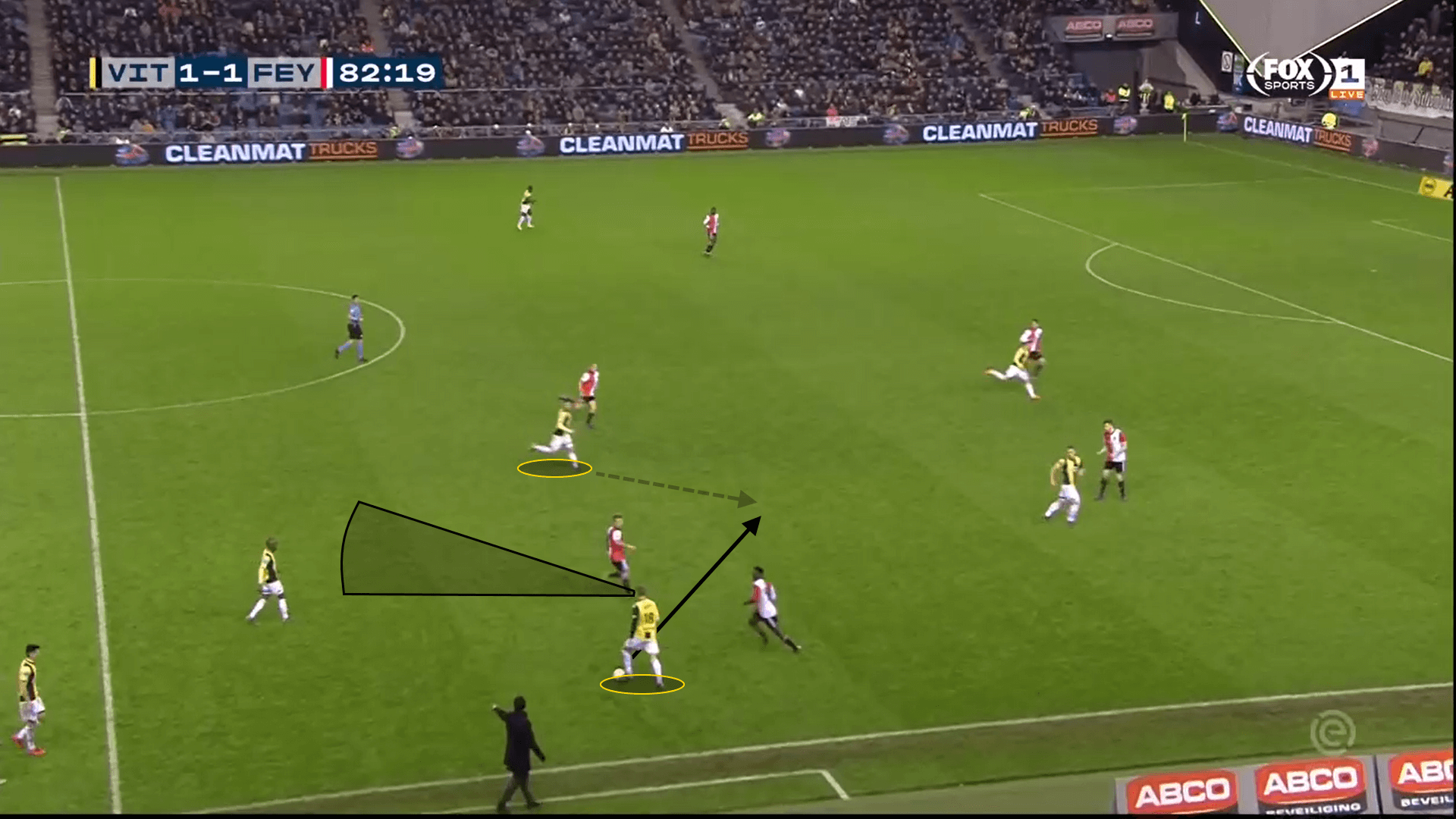
Ødegaard’s passing is not yet suited for a full-time midfield role, especially not one at a very high level. However, his passing in key areas (as represented by the key pass statistic) is promising. He makes 3.3 key passes per 90 minutes, with nearly two of those coming in an outfield setting. Right outside the box, Ødegaard is one of the most dangerous players in the league.
From this data, we can also note Ødegaard’s strength at set pieces. That he delivers 1.4 key passes from corners or free-kicks per 90 minutes is spectacular, and is representative not only of his passing technique but of Slutsky’s trust in the loan player. Ødegaard is Vitesse’s designated corner and free-kick taker, as was Mason Mount for much of last season. Two of Ødegaard’s five goals in the Eredivisie have been free-kicks.
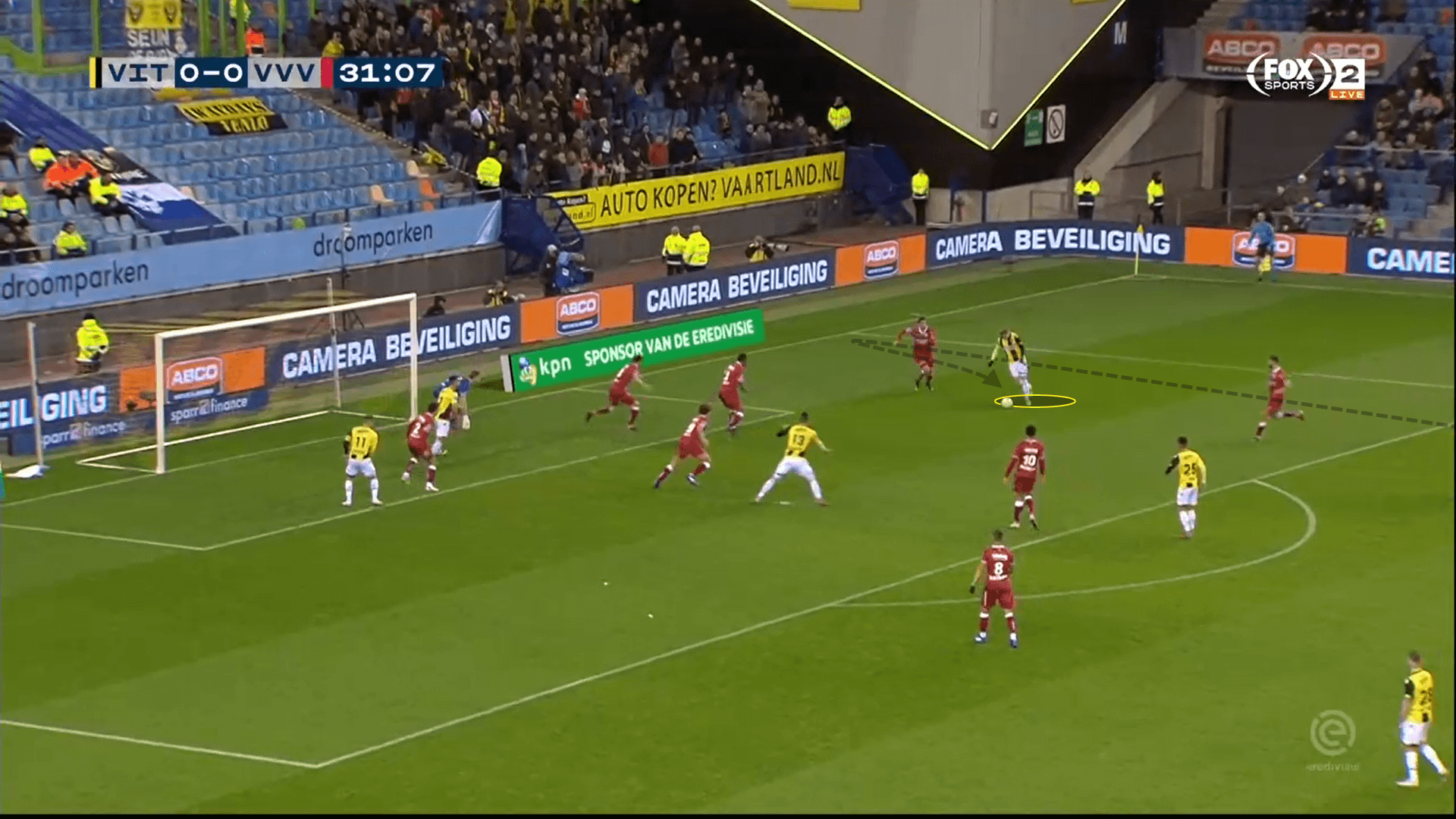
Shot selection and ability sometimes go hand-in-hand with the ability to control and pass a ball, which is certainly the case for Ødegaard. Forty percent of his shots have been on target this season, despite nearly nine out of ten coming from outside the box. While many of these end up saved, it is a testament to his ability to strike a ball well and choose good positions for shots. When watching Ødegaard, it’s clear that he doesn’t rush his chances, unlike some of his passes.
Strength and speed
Over the years, sports media has developed a bias that broadcasts white athletes as intelligent and technical while black athletes rely purely on physical attributes. This is a myth that I love to dispel in my analyses, and it is certainly something important to note about Martin Ødegaard.
We can label the Norwegian as a creative and intelligent talent, which he most certainly is, but we mustn’t exclude his extreme force on the ball. When watching Ødegaard, one of his most outstanding attributes is his pure pace when taking on players. Many balls that would usually end up recovered by the opposing defender are instead corralled by Ødegaard.
This allows him to be a bit more adventurous with his dribbling, as it’s tougher for slower players to disrupt his runs. Also, in terms of strength, Ødegaard is a lot tougher than his nimble frame would lead you to believe. If there’s one thing that has changed a lot since those YouTube clips from five years ago, it’s his strength and speed.
Finally, this renewed strength and speed makes Ødegaard a surprisingly effective defensive player. Vitesse’s versatile 4-4-2 defensive system means that he is either out on the right, pressing the left-back, or up top covering the opposition half. Ødegaard’s great reading of the game translates well to his pressing, as he doesn’t overexpose his team but is also very willing to take risks. His speed is a huge help in this regard. The next time you watch him play, be sure to take note of how quickly he closes down the ball-carrier.
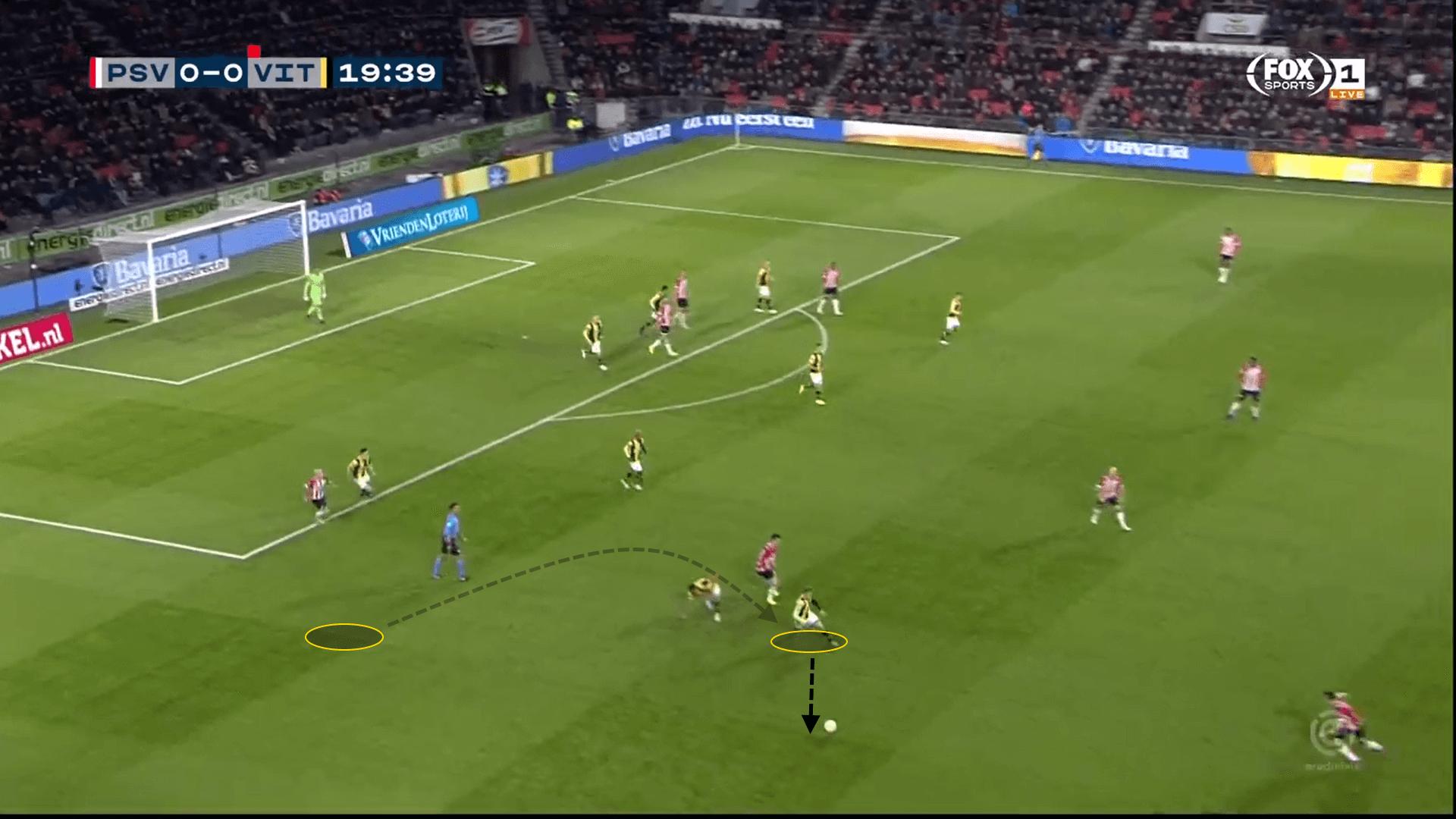
Conclusion
So, we can conclude that Martin Ødegaard is one of the premier talents in the Eredivisie. His creative ability is second to none, which encapsulates his dribbling, passing, and shot-creation. This is supplemented by his superb physical prowess, as well as his intelligent decision-making.
There is definitely room to improve when it comes to his quick-release passes, but his overall game is already sharp and refined at the ripe age of 20. But, when discussing talents playing in the Eredivisie, it is important to question how well that talent will translate to tougher leagues. The Eredivisie is a competitive and talented league, but the defending leaves a lot to be desired.
However, Real Madrid purchased Ødegaard as a teenager for a reason; he’s so, so greatly talented, both on and off the ball. When put into a role that requires him to be the main creative player, moving centrally from a wide position, he will excel in most regards.
I’m excited to watch Martin Ødegaard over the next decade, to see how his obvious skills will translate to La Liga or elsewhere. Until then, let’s watch him bask in the koselig atmosphere of the Netherlands.
If you love tactical analysis, then you’ll love the digital magazines from totalfootballanalysis.com – a guaranteed 100+ pages of pure tactical analysis covering topics from the Premier League, Serie A, La Liga, Bundesliga and many, many more. Buy your copy of the March issue for just ₤4.99 here, or even better sign up for a ₤50 annual membership (12 monthly issues plus the annual review) right here.

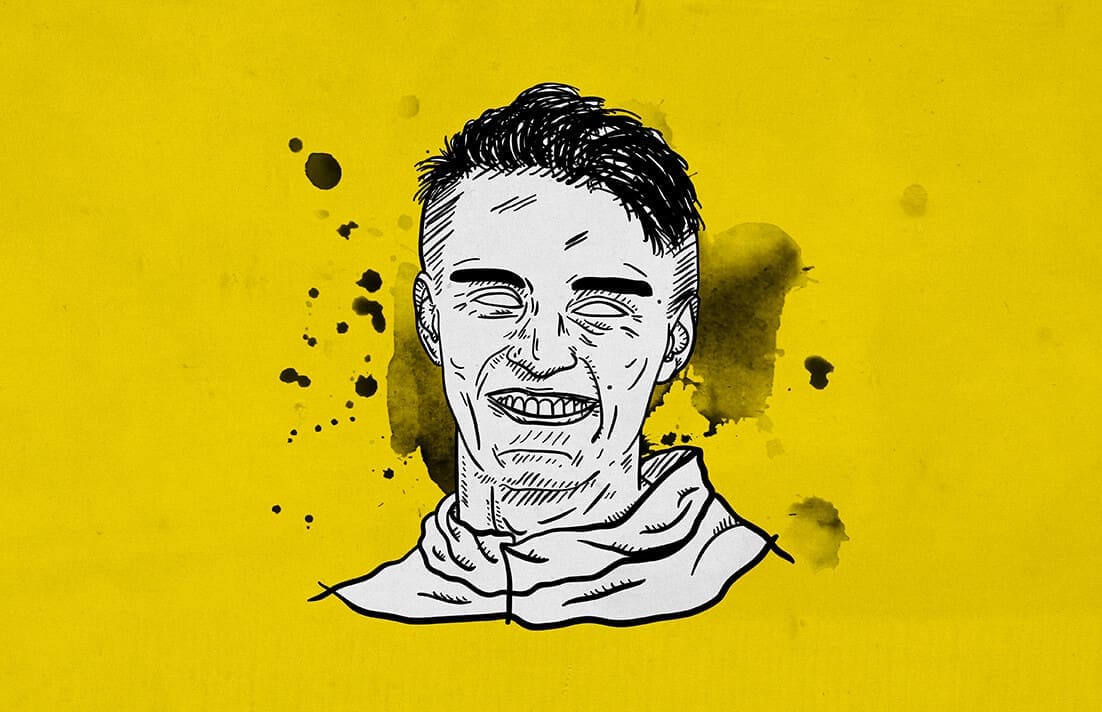



Comments